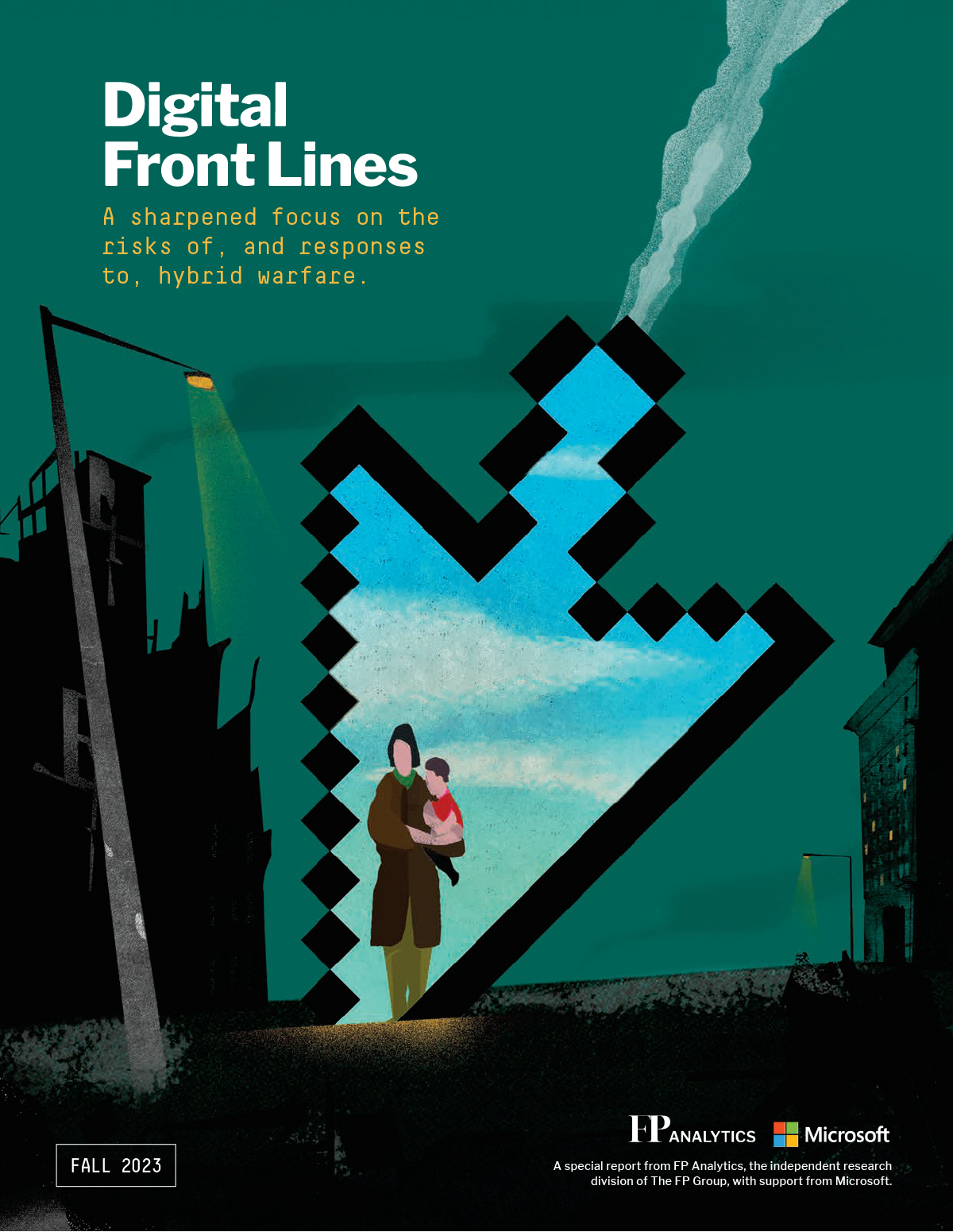Belligerents: Persons, states, or groups engaged in war or conflict.
Civil–military coordination: Dialogue and interaction between military and civilian agencies, including in the government, private, and nongovernmental sectors, to facilitate efficient and effective processes.
Collective defense: The idea that an attack against one ally is considered an attack against all allies; the concept is enshrined in Article 5 of the North Atlantic Treaty, which formed NATO.
Content moderation: The process of detecting, removing, and otherwise responding to offensive or objectionable contributions on a platform.
Critical infrastructure: Assets, networks, and systems vital to the functioning of society, including for transportation, water, food, health, energy, information, and communication.
Cyber attribution: The process of identifying and disclosing responsibility for malicious cyber operations.
Cyber resilience: The ability to resist, withstand, and recover from malicious cyber activity.
Deepfake: An image or recording that has been convincingly altered and manipulated to misrepresent someone as doing or saying something that was not actually done or said.
Deterrence and defense: The strategy of preventing attacks coupled with limiting or mitigating the damage incurred by them.
Deterrence by denial: Persuading an adversary not to attack by convincing them that an attack will not achieve their intended goal.
Distributed denial-of-service (DDoS): A cyberattack that targets websites and servers by flooding a site with errant traffic, resulting in poor website functionality or knocking it offline altogether.
Dual-use technologies: Products that have a primary commercial application but also have the potential to be weaponized or used for military applications.
Foreign influence operations: Covert actions by foreign governments to influence another country’s political sentiment or public discourse.
“Gray zone” tactics: The acts of state parties to a dispute maintaining high-level diplomatic relations while interacting antagonistically below the threshold of war.
Hack-and-leak operations: Incidents of data theft followed by the leaking of that information to the public.
Hybrid warfare: The use of nonmilitary tactics alongside conventional kinetic warfare to achieve foreign policy goals.
Information operations: Also known as influence operations, the collection and dissemination of information and propaganda about an adversary to advance strategic geopolitical goals.
International norms: Widely shared expectations about what constitutes appropriate behavior among governments and certain nonstate actors at the international level.
Kinetic warfare: Traditional military action that includes lethal force.
Multilateral institution: An organization of three or more states working together on issues of common interest, for example, the United Nations and NATO.
Multisector collaboration: Action and efforts across a range of international actors on a shared goal, such as cultivating and bolstering cyber resilience through technical, financial, diplomatic, and legal avenues.
Proxy warfare: A mode of war in which states with limited direct involvement in hostilities support or direct another state or party to the conflict.
Rome Statute: The treaty that created the International Criminal Court and defined the four most serious crimes under international law: genocide, crimes against humanity, war crimes, and the crime of aggression.
Rules of engagement: Directives that delineate when, where, how, and against whom military force may be used in a conflict.
Source code: The fundamental list of commands underlying a computer program.
Technical attribution: Using digital forensic tools to ascertain which software and hardware were used in a cyberattack.
Threat actor: Any organization, person, or group that directs an attack in cyberspace to cause harm against a specific target, including state and nonstate entities.














